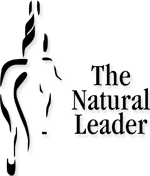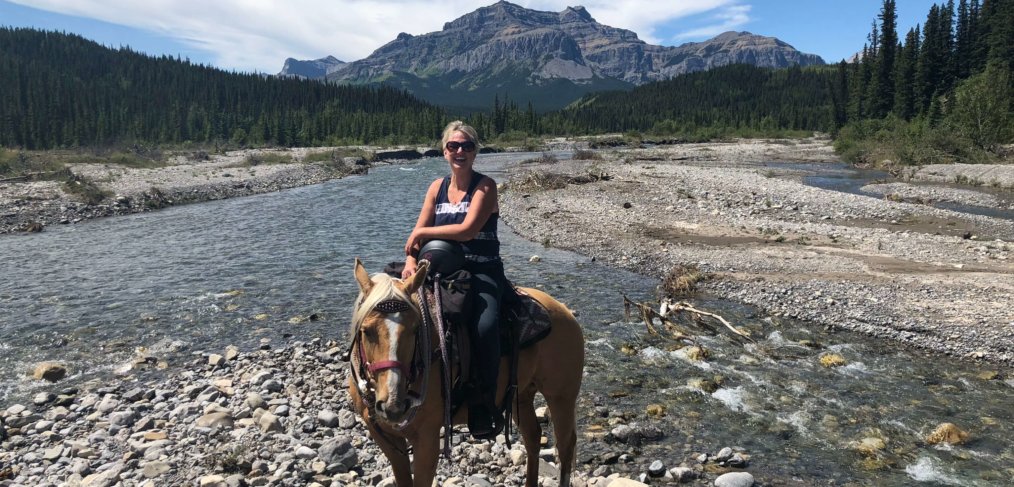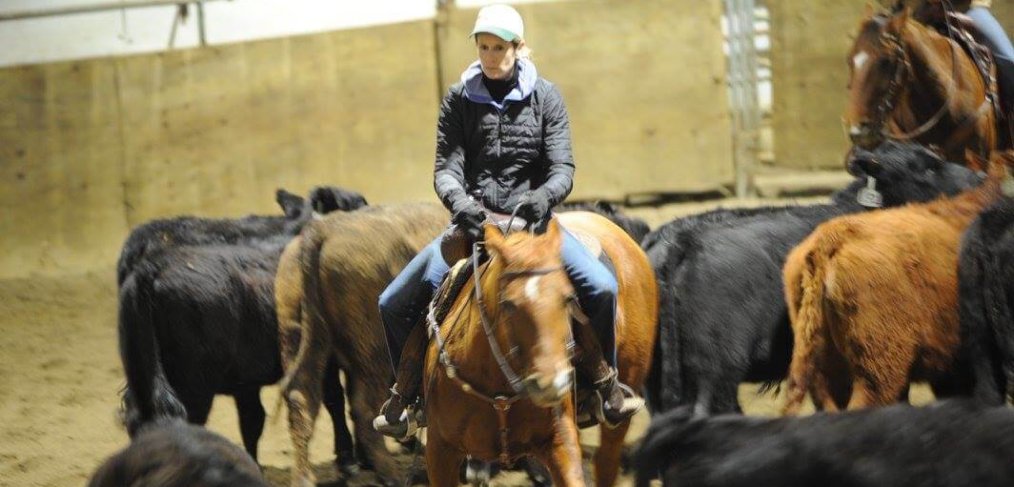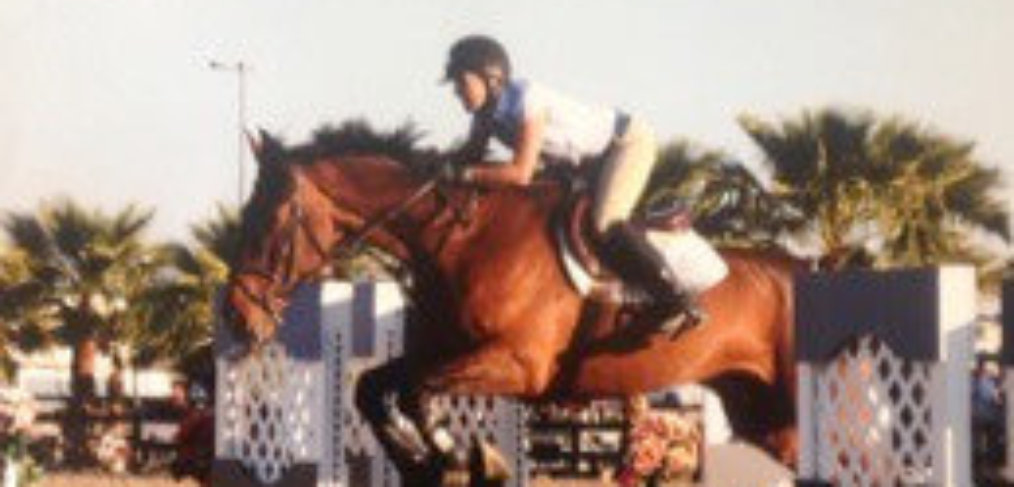Janice Webster is Senior Vice President Human Resources at Solium. For over twenty years she has been enabling high-performing organizations to excel. She admits these past three years have changed her through what she has learned from the two horses she and her husband now own. In this interview Janice explores what horses have taught her about herself, life and work. You could say it has been a fast ride!
For me, it is easy to get back in the saddle, it is however, more challenging to get back at the keyboard! The first half of the year for The Natural Leader has been brilliantly busy and the arrival of spring all consumed with projects that waited for six months. Early spring is the bug free season so time to catch up on those long rides!
The next conversation about leadership learning from a horse is with Luree Williamson, CEO Agriculture for Life. Luree’s life has long been influenced by horses. Her current role is dedicated to bringing a better understanding and appreciation of agriculture and it’s connection to all Albertan’s through the delivery of agriculture education and farm safety programs.
This blog has typically captured my leadership learning through horsemanship journey, but there are a lot of horses in Alberta and that got me wondering “How have horses influenced others on their leadership journey?
So I began asking. In the coming months I will be publishing a series of interviews with those willing to share what they have learned about their leadership from their relationship with horses.
 Schwung Isn’t that an awesome word?
Schwung Isn’t that an awesome word?
A few of the definitions you will find are momentum; swing; flourish or impulsion. A German word more often heard in dressage circles, Schwung is much more than any one of those words. The fourth level of the dressage training scale, Schwung refers to “the circuit of energy from the rider through the hind end to the front end of the horse.” or the fluid and seemingly effortless motion of horse and rider moving as one. Successful development of the foundational elements of knowledge, practice and awareness determine if you ever achieve Schwung.
It is this very combination that relates so perfectly to the concept of presence and the art of leadership.As with leadership, the dressage scale is both linear and cyclical. When one point, activity or task is achieved with one individual we have the opportunity to go through it in a similar but different fashion with another. Dressage is the constant pursuit of self improvement.
Relaxation the foundation and first stage of the training scale. This stage is about forward movement and gaining comfort in the company of each other, developing confidence and creating the willingness to learn. Like the foundation of leadership it is about a relationship based on a common language and trust.
Rhythm is about being able to maintain forward motion with clarity and understanding as the tasks become more complex. Here we begin to ask more of the horse and in turn a balance in the roles and responsibilities in the relationship. As we begin to delegate more we can see where another’s behaviour might be a reflection of our request. You are developing your Awareness of Others and your ability to be flexible as you assist someone else to be their best.
Contact is about confident forward motion with a soft, steady connection between horse and rider. Relaxation and Rhythm in place the horse and rider find a common balance point. Here we begin to truly delegate responsibility, encouraging the horse to offer their best.
Ironically Contact is where most relationships begin. Be it horse or human, this is where we know what it is supposed to look like and in the effort to get results we resort to control. In horsemanship it looks like bigger bits, spurs and hard hands, in leadership it is about titles and how much we know and just doing it ourself.
Letting go of the impulse to “take control” is a tough one as it requires us to be confident in the face of the unexpected. It should be about channeling the forward energy and the potential of what it could be. The greatest challenge comes in trusting ourself first and being willing to take the time it takes. Reaching Schwung requires a high degree of self awareness and confidence.
While achieving Schwung may be a goal, it is not the final stage of the Dressage Training Scale. The beauty in choosing an art form is there are so many ways to interpret and apply what you learn. There are no end points in fine horsemanship or leadership, there is always a new opportunity to achieve the seemingly effortless way of being.Achieving Schwung is my current journey in the arena and through the written word. I find Schwung, then I feel like I lose it, It is taking longer than I thought it should it, then again I never realized how much I had to learn. Thank you for joining me on this path.
 You are buckled in, you notice the flight attendant going through the motions of the safety demonstration. The short delay announcement frustrates you and yet you find yourself gripping the armrest as if the plane relied on this very effort to lift it off the tarmac.
You are buckled in, you notice the flight attendant going through the motions of the safety demonstration. The short delay announcement frustrates you and yet you find yourself gripping the armrest as if the plane relied on this very effort to lift it off the tarmac.
Our irrational fear of flying was the topic of Michael Enright’s radio interview with Author and First Officer Patrick Smith. Smith suggests the fear is normal and natural, admitting there is something about being thousands of feet above the ground moving at hundreds of miles an hour that generates fear for anyone from passenger to pilot. As inherently unsafe as it may sound, flying has been engineered to be the very opposite.
Enright’s questions clearly reflected his own fear of flying, suggesting Smith’s version of a near miss sound more like a near hit. Smith offers that our fear of flying is more likely the result of an over active imagination, interpreting what we hear from the media rather than one based on facts.Smith dubs this the PEF or Passenger Embellishment Factor. The PEF exaggerates a 20 foot drop in altitude to thousands, a 20 degree bank turns into 60 and a lightening strike becomes a ball of light dancing down the aisle.
PEF easily translates to the Participant Embellishment Factor in The Natural Leader programs. To assess people’s comfort level before entering the arena we always ask. “On a scale of one to ten, one being fearful, ten meaning you might have experience with horses and are quite comfortable with the prospects of the day. What is your comfort level working with a horse?” The number of zero’s and negative numbers we have encountered of late is somewhat unsettling.
What I have noticed, rarely is there a bad experience to go with that fear, the horse simply represents an unknown. So the idea has worked them into such a state they hadn’t slept or were physically ill at the prospect of the day. Their imagination has filled in the blanks and created the “What if” scenarios for this large and powerful animal.
While the work with horses allows people to experience Leadership moments at the threshold of their comfort zone, fear can get in the way of that opportunity. Our goal is to ensure each person is supported through their learning experience in a manner that suits them best. The sessions often give participants a better understanding of when their fears of failing, or falling, are holding them back as leaders.
I have gained a lot of experience on managing fear around horses. You can’t simply tell someone “Don’t be afraid”, however we can provide information that is relevant and immediate, setting a goal that is attainable. So we start with breathing.
When we are fearful we tend hold our breath in anticipation. Our focus of attention is on the future not the present so we are rarely able to respond to the moment. Focusing on breathing helps people remain in the present so they can recognize and assess the physiological response they are experiencing. Once they notice what is happening in their body they are more likely to be able to name it and therefore manage the emotions associated with the feeling.
One reference tool we have used in our programs is The Awareness Wheel, adapted by Jacques & Associates from the work of Miller, Wackman, Nunnally and Saline. The tool helps bring forward a dialogue on what has generated a reaction or an emotion so we might be more thoughtful in our response. Getting participants to focus on their breath helps them become more present to what might be actually happening in the present.
So the next time you find yourself gripping the armrest like everyone’s life depends on it, remember to breathe. Relax your body and your mind so you can actually enjoy the flight.
CBC Radio Interview >>http://www.cbc.ca/player/Radio/The+Sunday+Edition/Segments/ID/2416721253/
Photo: Oliver getting his Ya Ya’s out before I get on!
 News feeds have been all a buzz about Melisa Mayer’s recent decision to eliminate remote work at Yahoo. As I write, one online poll suggests people are evenly split as to whether they agree with Mayer or not. The comments are full of strongly differing opinions, so one could say the decision is an emotional issue!
News feeds have been all a buzz about Melisa Mayer’s recent decision to eliminate remote work at Yahoo. As I write, one online poll suggests people are evenly split as to whether they agree with Mayer or not. The comments are full of strongly differing opinions, so one could say the decision is an emotional issue!
Some sources state her decision was based on a tendency to use statistics, that she had been monitoring remote workers VPN access. Other sources say it’s simply an effort to strengthen the brand and reposition Yahoo for the mobile generation.
Having worked at one of those upstart internet companies I have a sense of the work. People all over the globe could be part of a team. VPN access could only be a small part of the real issue as much work is done on a local machine, uploading data/code to the main server as needed.
This news is hot on the heels of an amazing discussion I had over lunch at a friends last week. The topic “when women have worked so hard to get into a position of power Why then are they not even more supportive of other women?”
The discussion flowed from one example of a senior manager who was ready to get rid of a woman on her team. When questioned as to what were her reasons, it was revealed the subject was indeed one of the best performers, provided superior work, never missed a deadline and excelled at every way. My friend somewhat taken aback over how venomous the statements came out, through a few more questions revealed the anger stemmed from the freedom that the contract employee was able to enjoy. The contractor came in for meetings but mostly worked from home. While I may have forgotten the exact questions, the response sticks in my mind “I paid my dues, she should pay hers!”
So my question to Mayer would be “Is it really about getting the work done, or is it a Matter of Trust?”
I understand the Yahoo decision isn’t a gender issue though I can’t say I see Mayer’s perspective. Today’s Business Insider says it’s about culture so perhaps a change in work habits is required. A culture is defined by its leader, the foundation of leadership is trust. I may not know what it is to run a company like Yahoo but I am familiar with what it takes to trust others. For them to do their best, I have to trust myself first.
I’ve started enough colts now to see the connection between how I react to what is offered. Each colt may test me in a different way but it always comes down to how I respond. I admit sometimes it gets a little scary and yes my emotions can get the better of me, but if I don’t trust myself first, there is no way the colt will trust me. You can’t fake trust, or at least I have to admit to the fact that the colt will see it, if that shows up then I certainly have to be prepared for the worst.
I can only hope that Mayer is able to rebuild trust enough to change the culture she suggests is the problem with Yahoo.
So yes, it now is a matter of trust.

We all know someone who professes to love what they do. They are passionate about getting up every day and going to work, they view a day at the office as simply another opportunity.
While my office may look a bit different, I am fortunate to include myself in that group. Loving what you do isn’t always easy and I am the first to admit that I now understand why people get jobs!
Acknowledging my excitement at signing on a client for a series of sessions this year, a friend responded with “it’s only taken you eight years to become an overnight sensation.” I had to laugh at the absolute truth! No wonder so many people give up on their dream of their own business within the first five years, it is hard work and often without a lot of immediate returns.
While the returns might not be immediate, the benefits are many. Others who start a business typically pick up a past employer as a first contract, what I realised is the seven years prior to me leaving a job were focused on clients in the U.S. and Europe so my local contacts were very limited. That required me to step outside my comfort zone and get out to meet people. Past strangers I now call friends. I have learned more in the past eight years than my formal schooling years in total. And it’s all been relevant!
While I have always been pretty good at setting goals, managing time and completing activities, the reasons I fit so well into the role of managing programs. That skill has proven itself over in spades as I am not waiting for someone else to do something for me, but I am getting better at hiring others who will do certain things quicker than I.
I have learned so much about myself that it truly helps in how I connect and communicate with others and of that I am still learning. That knowledge continues to enhance my leadership and my horsemanship. Leadership and horsemanship it’s all the same to me and my job now is to help others see where the parallels lie for them.
My closing thought at a school presentation for grade eleven and twelve students considering their career path. “This career didn’t exist when I was in school. It was one that showed up for me as I developed the skills I would need to be successful. Just be open and journey you start out on may lead to totally unexpected destinations.”
sent back in March – but recently published in the May / June issue of Eclectic Horseman
 While we may dream of riding the range, roping and doctoring cattle or making the perfect bridle horse, the side of the range we rarely fantasize about are the -30 mornings when you actually have to be outside. Frozen water tanks, tractors that refuse to start, hydraulic fluid as thick as molasses, fingers that don’t work, numb feet and so many layers of clothes everything feels like you are moving in slow motion. As March arrives it’s hard to believe that spring is suppose to be here in less than three weeks.
While we may dream of riding the range, roping and doctoring cattle or making the perfect bridle horse, the side of the range we rarely fantasize about are the -30 mornings when you actually have to be outside. Frozen water tanks, tractors that refuse to start, hydraulic fluid as thick as molasses, fingers that don’t work, numb feet and so many layers of clothes everything feels like you are moving in slow motion. As March arrives it’s hard to believe that spring is suppose to be here in less than three weeks.
Now I realise that not everyone has to live with the same frigid temperatures, but from what I hear, this year, winter seems to have all but covered North America. Mother nature simply doesn’t seem to be holding up her end of the deal. Regardless of the weather cows will be calving and there will be many hardy souls checking to ensure the latest arrival has a chance. The cowboy image is more than a heated indoor arena and the conveniences we have grown so accustomed to.
A good number of us reading Eclectic Horseman spend more of our time riding a desk chair than our horse, even fewer who work with cattle on a regular basis. Statistics suggest about 80% of horse owners board. For those of us who don’t, we try to manage horse time along with work commitments, commuting and keeping up with friends and family that have little to no interest in our equine passion.
I am fortunate enough to look upon participating in a horsemanship clinic as professional development. While I hone my horsemanship skills I am always seeking out tidbits of information that apply outside of the arena. What I am finding is that cowboy wisdom applies to more than just handling horses or cattle. Pretty much every clinic I’ve attended there is as much talk about the person solving their problem as there is about managing a horse problem.
While there may be a plethora of buckaroos and cowboys decked out with all the right stuff, Buck Brannaman couldn’t have said it better “Horsemanship is not a wardrobe issue.” What we are learning is not so much about the outside of the horse but what motivates the inside. There is always talk about understanding the horse, getting to the mind, firing up the natural curiosity and their inherit desire to get along. Everything that we are learning about our relationship with our horse applies outside the arena.
Horsemanship is actually about becoming better human beings. We have an incredible capacity to change things and what I’m seeing is how horses can change people.
“..in this modern world where machines and scientific inventions multiply unceasingly, the horse can have an important role. He is the ideal companion for man, who loves him and finds in his company something rarefied and transcendent.” Nuno Oliveira
 Ever worked with a drama queen? You know the one who has a knack for creating a crisis or constantly seems to be at the epicentre of chaos?
Ever worked with a drama queen? You know the one who has a knack for creating a crisis or constantly seems to be at the epicentre of chaos?
My drama queen? A 16 year old female, the key difference just might be, my drama queen is a horse. Despite the years of experience, wisdom and leadership skill I have gained, Zoe is very good at sucking me into her emotional vortex. Always ready to teach me something new, Zoe pointed out my default to manager when she most needed, a confident and clear leader.
It was a familiar ride down a road we have traveled a thousand times, yet every bush, sound and falling leaf became a serious distraction. I was so busy managing all the “Ya But’s” and “OMG’s”, we surely would be in a froth by the time we hit the small stand of aspens a kilometer into the ride.
As the emotion of frustration rose in me – it dawned on me, Zoe was doing exactly what she ALWAYS did, and I was responding just as I always had. I was so busy managing and worrying about another exhausting ride that I was blind to what I was doing in the moment.
Thinking back on all the clinics, horsemanship tips and leadership knowledge I have gained over the years, many things came to mind. The thought that rang true “the horse will keep you busy if you don’t keep them busy”. It was my job to get her focused – I had to have a clear vision for both of us. I had to give her something more compelling to help her be successful. As I started asking questions, the frantic jig turned into sidepassing, backing and repeating patterns. We stopped, teetered back and rolled over on the haunches each task bringing us ever closer to that terrifying stand of trees. The occasional distraction reappeared, but when her head bobbed up and neck stiffened I found something new for her and we started the whole process again.
The ride that began feeling like I needed every ounce of my strength, was changing. As Zoe started to see a purpose to my requests she engaged with her responsibilities. She started finding the answers to my questions with less and less effort. The ride became less like work and more enjoyable, for both of us. We were beginning to dance to the same tune.
In the midst of that foreboding stand of trees I could feel her look to me for direction. With the lightest go forward request, we moved off. From the road we traveled onto the quarter section stubble field. We circled at a walk, trot and a lope, the open space no longer daunting. She was soft, we backed turned and then the biggest reward of all, we walked home, loose reins swinging in time with her stride.
As a manager she had kept me busy, as a leader I was able to help her focus and together we accomplished far more. Here’s to recognising the drama queen on your team can actually help you be a better leader!



